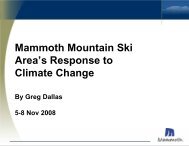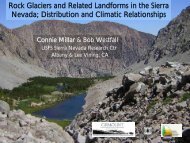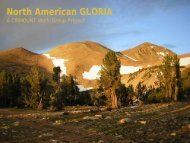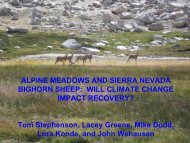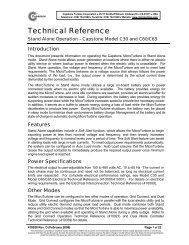climate change effects on predator/prey interactions: how can we ...
climate change effects on predator/prey interactions: how can we ...
climate change effects on predator/prey interactions: how can we ...
Create successful ePaper yourself
Turn your PDF publications into a flip-book with our unique Google optimized e-Paper software.
How does idiosyncratic <strong>prey</strong> resp<strong>on</strong>se<br />
affect the <strong>predator</strong><br />
• All woodrats equally preferred <strong>prey</strong><br />
• Predator (spotted owls) inhabitat a gradient of<br />
particular habitat structure (e.g., late seral forest)<br />
• Owls in <strong>on</strong>e habitat (100 – 85% <strong>can</strong>opy closure) may<br />
have declining woodrats (species that prefer<br />
closed <strong>can</strong>opy) while owls in another habitat (70<br />
– 60 % closure) see little <str<strong>on</strong>g>change</str<strong>on</strong>g> in woodrats<br />
(those that prefer open forest).<br />
Bushytailed<br />
woodrat<br />
Big-eared<br />
woodrat



